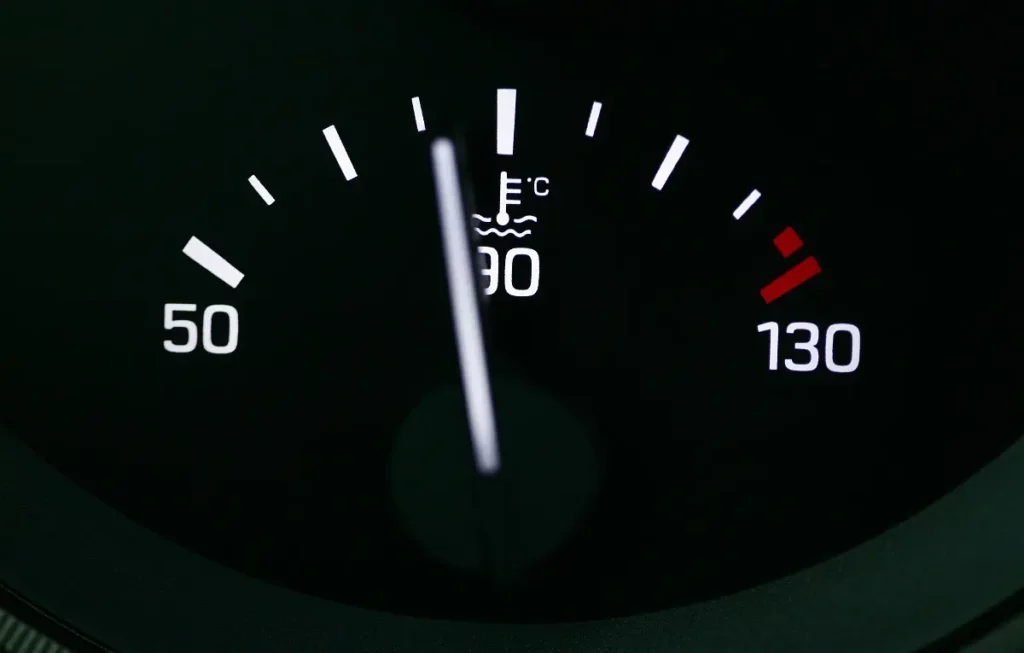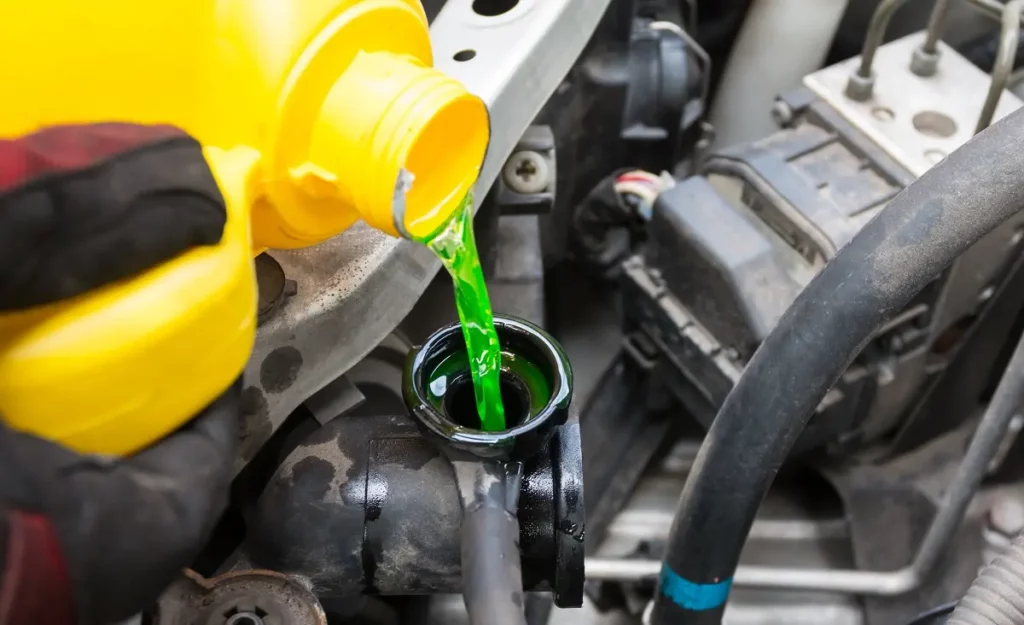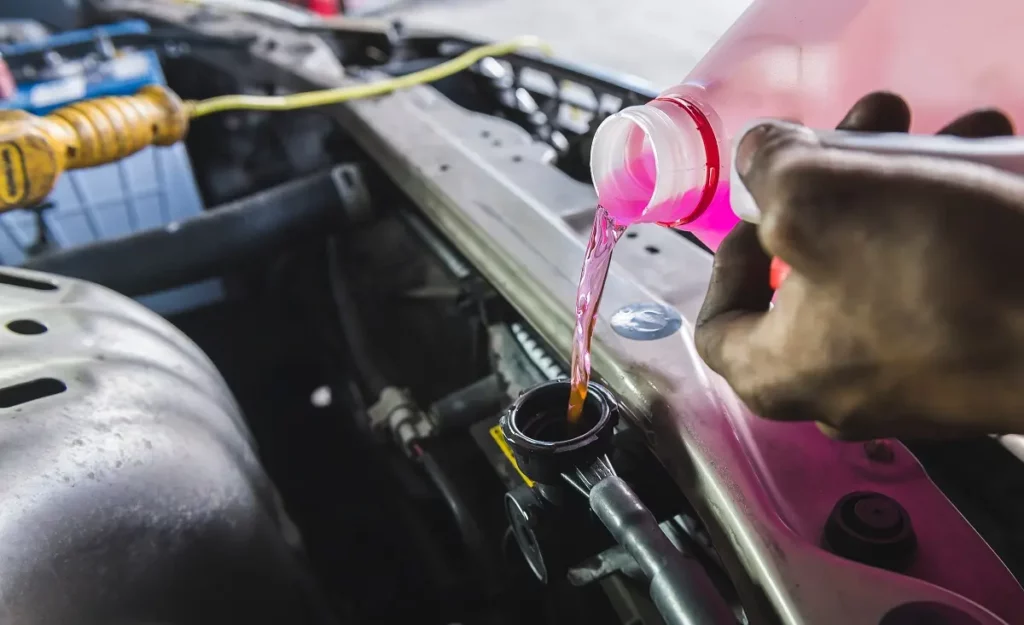Car maintenance involves all kinds of preemptive procedures. You know the drill — stay on top of your oil changes, service your brakes, and you’re golden. However, there’s more to car maintenance than that.
Your cooling system needs some TLC as well. In this round of the eEuroparts.com Car Owners’ Manual, we’ll discuss cooling system maintenance, what to do, when to do it, and why it absolutely matters.

The Basics of Engine Cooling Systems
The internal combustion engine is an intriguing device. It runs on the sheer force of an explosion that occurs thousands of times per minute. The fuel/air mix is injected into a cylinder, a spark plug provides the necessary ignition and the resulting detonation pushes the piston down.
It’s a simple process that has worked for decades. However, the byproduct of that process is heat and lots of it. If left to its own devices, an average internal combustion engine would fail catastrophically whiting mere minutes.
That’s why all engines feature a cooling system that runs a special mix of chemicals through the engine block, taking away some of that heat and diverting it away from components that would otherwise fail. The hot coolant is pushed back out to the radiator where it is cooled down either by the oncoming air as you drive or by a radiator fan that kicks in when you’re stationary.
Your average cooling system is made of a radiator, a water pump, a thermostat, a coolant expansion tank, and a heater core. All of these components are connected in a loop using a set of coolant hoses.
When you first start the car, the water pump kicks in providing pressure within the system. At this time, the circulation of coolant is prevented to give the engine a chance to reach its optimal operating temperature. The moment it does so, the thermostat opens allowing the hot coolant to escape the engine block, and fresh cold coolant to take its place.
The heater core is there to convert the heat from the coolant into hot air that you can use in the passenger cabin.
All the components listed above have to work flawlessly for your engine to stay within its optimal operating temperature.
How to Maintain Your Car’s Engine Cooling System?

Maintaining the cooling system comes down to tracking how long the coolant has been in there, and whether it’s the right coolant mixture for your needs. The purpose of the coolant is not only to maintain your engine’s temperature but also to protect the cooling system internals. Most coolants are designed in a way that doesn’t cause corrosion of metal parts found inside the closed environment we call the engine cooling system.
- Get the right type of coolant
- Get the right concentration of antifreeze
- Flush your coolant regularly
- Watch for leaks
Get the Right Coolant
Coolants are a very delicate product. Every engine is designed for a very specific blend that matches its thermal needs, but also the compositions of that engine’s internal components. If you get the wrong blend for your car, you can cause permanent damage. That’s why it is essential that you stick to whatever is recommended by your car’s manufacturer.
Whatever you do, don’t mix two different types of coolant, and don’t use regular water to top off the reservoir. Mixing two types of coolant can lead to unwanted chemical reactions that can greatly deteriorate your car’s ability to manage engine temperature. Check out our selection of coolants to find a quality option for your vehicle.
Get the Right Concentration
All coolants are rated to handle a specific temperature range. Depending on how harsh the winters are in your neck of the woods, you’ll need to get a blend that can handle the lowest temperatures in your area.
Failing to use the right coolant can lead to ice, and unlike water, ice expands. Cracked radiators, hoses, and other parts of the cooling system are fairly common when your coolant freezes. On top of that, old coolant loses some of its ability to resist cold, so even if you have the right blend, it might be too worn out to handle low temperatures.
Flush Your Coolant Regularly

Most cars these days come with so-called long-life coolants. The idea is that you don’t really have to flush the system for the life of the engine. However, this doesn’t always work out as intended. Some long-life blends degrade over time, leaving you with a potentially compromised engine.
Even if your vehicle uses a long-life coolant, it’s highly recommended that you flush the system from time to time. This can be every 2 years, or every 4 years, depending on your needs. The best way to know when to do a full flush is to get an antifreeze tester. This device will tell you exactly what’s going on with your antifreeze, and whether it has lost any of its properties.
Watch for Leaks
The simplest way to stay on top of your cooling system maintenance is to keep track of your coolant levels. This will tell you if you have a leak somewhere in the system. Leaks commonly occur near the radiator, or at the thermostat housing.
However, a consistent drop in coolant levels can also be indicative of a head gasket issue. Needless to say, that is a bad sign for your wallet. The silver lining here is that knowing there’s a leak on the head gasket can be a good warning sign that you should take action before your engine runs on coolant for too long.
Keep in mind that some engines have a higher oil pressure than coolant pressure, meaning that oil will get into the cooling system and not vice versa. Check for discoloration in the overflow reservoir to look for oil and other aesthetic changes.
Get Quality Cooling System Parts for Your Car!
Here at eEuroparts.com, you’ll find a wide range of quality auto parts for your European car. We stock products from some of the best OEM and aftermarket manufacturers in the world. Use our vehicle selector tool to find parts that are a guaranteed fit for your car’s make and model.


